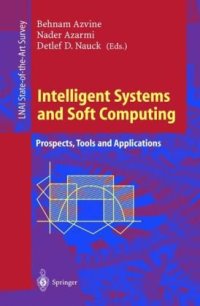
Ebook: Intelligent Systems and Soft Computing: Prospects, Tools and Applications
- Genre: Computers // Organization and Data Processing
- Tags: Artificial Intelligence (incl. Robotics), Software Engineering, Computer Communication Networks, Information Systems Applications (incl.Internet), User Interfaces and Human Computer Interaction
- Series: Lecture Notes in Computer Science 1804 : Lecture Notes in Artificial Intelligence
- Year: 2000
- Publisher: Springer-Verlag Berlin Heidelberg
- City: New York
- Edition: 1
- Language: English
- pdf
Artificial intelligence has, traditionally focused on solving human-centered problems like natural language processing or common-sense reasoning. On the other hand, for a while now soft computing has been applied successfully in areas like pattern recognition, clustering, or automatic control. The papers in this book explore the possibility of bringing these two areas together.
This book is unique in the way it concentrates on building intelligent software systems by combining methods from diverse disciplines, such as fuzzy set theory, neuroscience, agent technology, knowledge discovery, and symbolic artificial intelligence. The first part of the book focuses on foundational aspects and future directions; the second part provides the reader with an overview of recently developed software tools for building flexible intelligent systems; the final section studies developed applications in various fields.
Artificial intelligence has, traditionally focused on solving human-centered problems like natural language processing or common-sense reasoning. On the other hand, for a while now soft computing has been applied successfully in areas like pattern recognition, clustering, or automatic control. The papers in this book explore the possibility of bringing these two areas together. This book is unique in the way it concentrates on building intelligent software systems by combining methods from diverse disciplines, such as fuzzy set theory, neuroscience, agent technology, knowledge discovery, and symbolic artificial intelligence. The first part of the book focuses on foundational aspects and future directions; the second part provides the reader with an overview of recently developed software tools for building flexible intelligent systems; the final section studies developed applications in various fields.